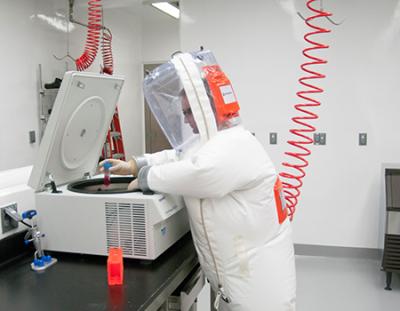In an effort to identify novel approaches to treat and mitigate nervous system injuries resulting from mass casualty chemical incidents, NIAID, along with the National Institute of Neurological Disorders and Stroke (NINDS), is calling for basic research applications under CCRP Initiative: NIH Countermeasures Against Chemical Threats (CounterACT) Basic Research on Chemical Threats that Affect the Nervous System (R01, Clinical Trial Not Allowed). The notice of funding opportunity (NOFO) is expected to generate results that shed light not only on the fundamental mechanism(s) of toxicity of highly toxic Chemicals of Concern (CoCs) but also on potential new targets to inform the development of medical countermeasures (MCMs) that would be effective during and after civilian mass exposure situations.
Research Objectives
The civilian chemical threat spectrum includes almost 200 highly toxic chemicals that the U.S. government has designated as CoCs, which are broadly categorized by primary mode of toxicity, i.e., toxidrome.
For this NOFO, the toxidromes of interest are primarily Cholinergic and Convulsant CoCs, however, the following toxidromes will also be considered responsive due to secondary effects on the nervous system: Anticoagulants and Blood/Metabolic (Knockdown) agents. Refer to the NOFO for CoC examples of each of these toxidromes as well as a list of potential research categories that will be supported under this initiative.
While applicants may choose to investigate all biological systems that their chosen CoC might impact, in all cases, the proposed research must address either immediate, long-term, or both immediate and long-term nervous system effects after a single acute toxic exposure event. We encourage applications that use more than one CoC within a toxidrome to identify overlapping mechanism(s) of toxicity.
Note, however, that research on toxic effects due to chronic exposures such as environmental, occupational, or residential will not be supported.
In addition, the following types of studies are not responsive to the NOFO and will not be reviewed:
- Efficacy studies, e.g., creation and validation of candidate MCMs.
- Clinical trials.
- Applications that propose to study chemicals that are not on the Department of Homeland Security CoC list or applications that propose to study CoCs that affects the pulmonary system, skin, and eyes, or respiratory drive.
- Projects that do not address health outcomes after a single acute exposure, i.e., prolonged or persistent chemical exposure.
Special Considerations
Given that many of the CoCs of interest are extremely hazardous, all applications must include a letter from appropriate institutional biosafety officials indicating that studies are deemed safe for research personnel and the environment. Also, NINDS explicitly emphasizes adherence to NIH’s Rigor and Reproducibility in Grant Applications policy and, therefore, the biological rationale for your proposed experiments must be based on rigorous and robust supporting data.
We strongly encourage applicants to contact the scientific/research contacts listed in Section VII. Agency Contacts of the NOFO to confirm that the proposed CoC is of interest to the program.
Application Deadlines, Budget Information, and Eligibility
The first application due date is October 17, 2025, and the second application due date is October 16, 2026. Applicants must use FORMS-I for this opportunity.
The maximum project period is 3 years, and application budgets may not exceed $300,000 in annual direct costs. NIH intends to support up to four awards.
Foreign organizations and non-U.S. components of U.S. organizations are not eligible to apply.
Contact
For NIAID-related questions, contact Dr. Dave Yeung, at dy70v@nih.gov or 301-761-7237.


